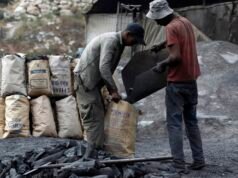Imagine you wake up and start going about your normal day. Your better half prepares breakfast for your children, and you get dressed for the office. As you open the door to leave to work, you spot a bus packed with tourists parked right on the street where you live.
People are pointing at you from the bus, exclaiming excitedly. As your children emerge from the house to go to school, the tourists in the bus throw bananas at them. And as if all at once, the tourists start taking out cameras, with intrusive flashes – taking photos of your every move.
Would you feel violated and insecure? What if you were trying to go to work, and a bus stopped, and its occupants started making faces at you while throwing bits of food hoping you catch them. Would you feel like a lesser being?
The bus full of tourists, like the hundreds before it and the hundreds after it, represents the continuous breach of privacy of one of India’s oldest indigenous people.
Every now and then, bus-loads of tourists descend upon the quiet Andaman island. Talking in animated voices, they have come for the chief attraction. “People of the jungle”, the “wild tribes”, and other exaggerated adjectives have been used by wily tour operators, to sell this chief attraction – sightings of the Jarawa tribe.
The tourists are instructed not to throw food or clothes at the tribals, or try and establish contact. But it is perfectly okay to point, first with fingers and then a camera. The tribals, who had been promised safety by the Government, are being sold as the chief attraction of a holiday package.
Genteel folks from urban jungles are surprised to see their hunter-gatherer counterparts. They are shocked at their often primitive ways. What these city folks don’t understand, is that most of mankind descended from people who used these primitive ways. In fact, if anything, the tribes are closest to what man used to be like. Hunting and gathering, instead of sitting in an air-conditioned cabin.
But, of course, we are more civilised. Civilised enough, to hawk the island home of a tribal populace as a tourist attraction. And organise hundreds of buses and trucks to ply on the arterial road that goes straight through the Jarawa reserve.




